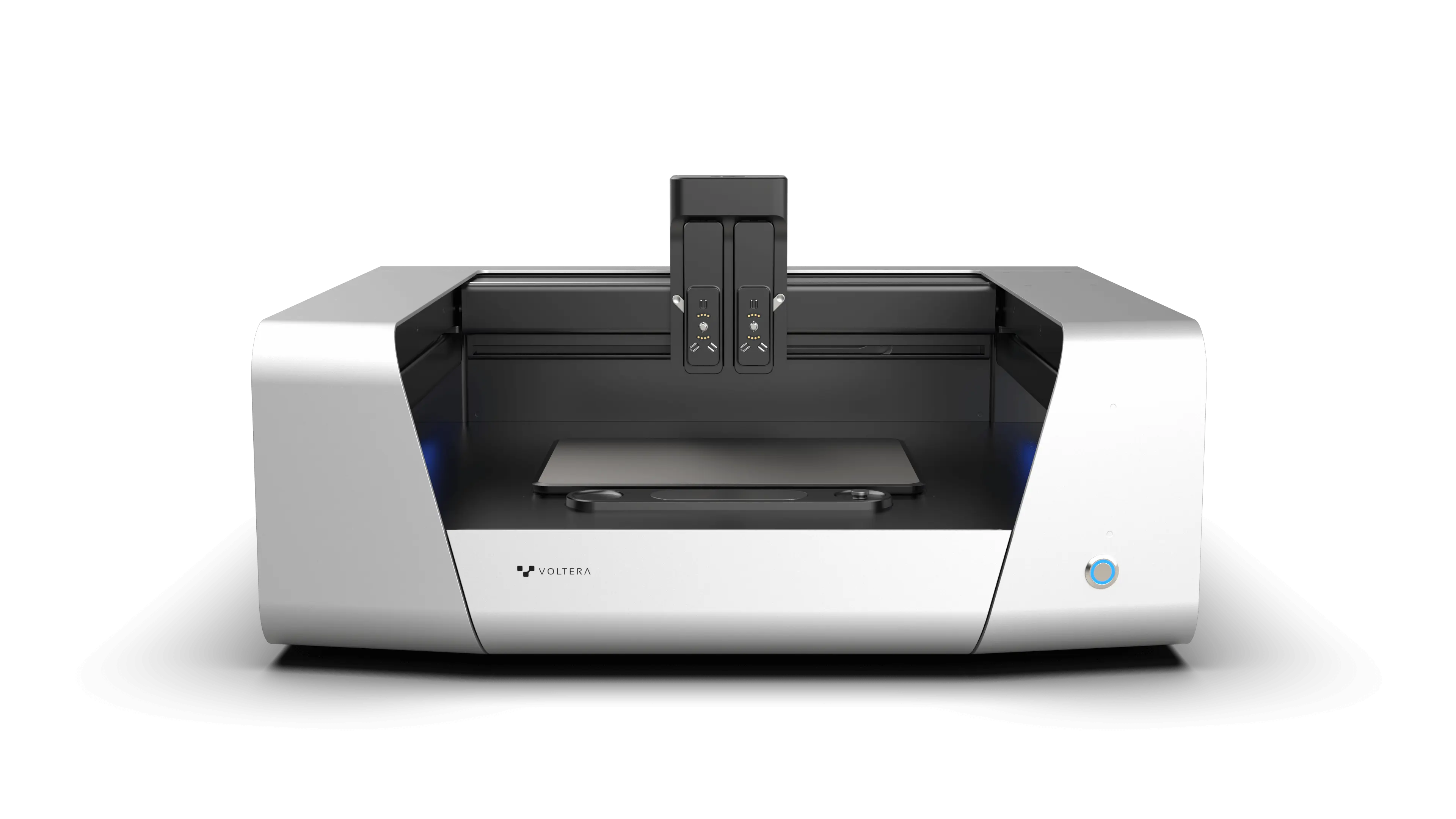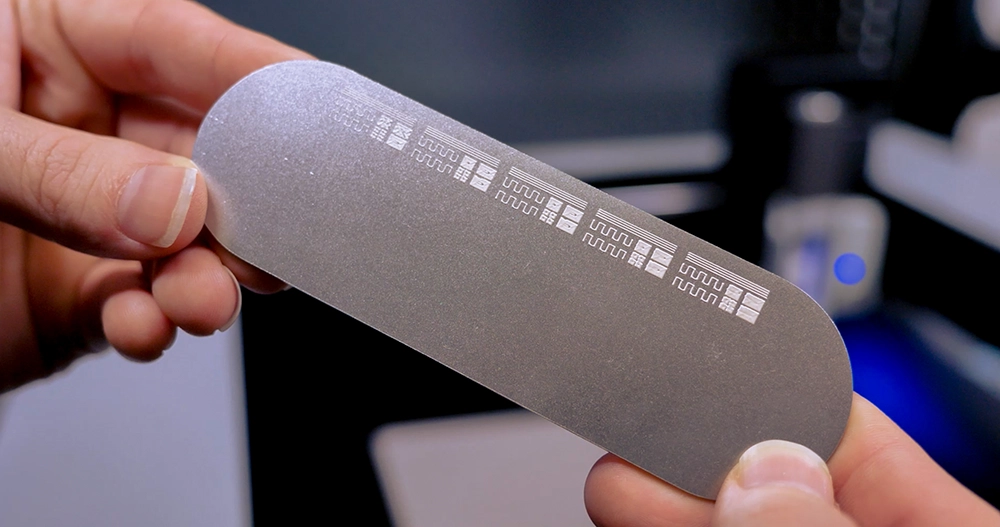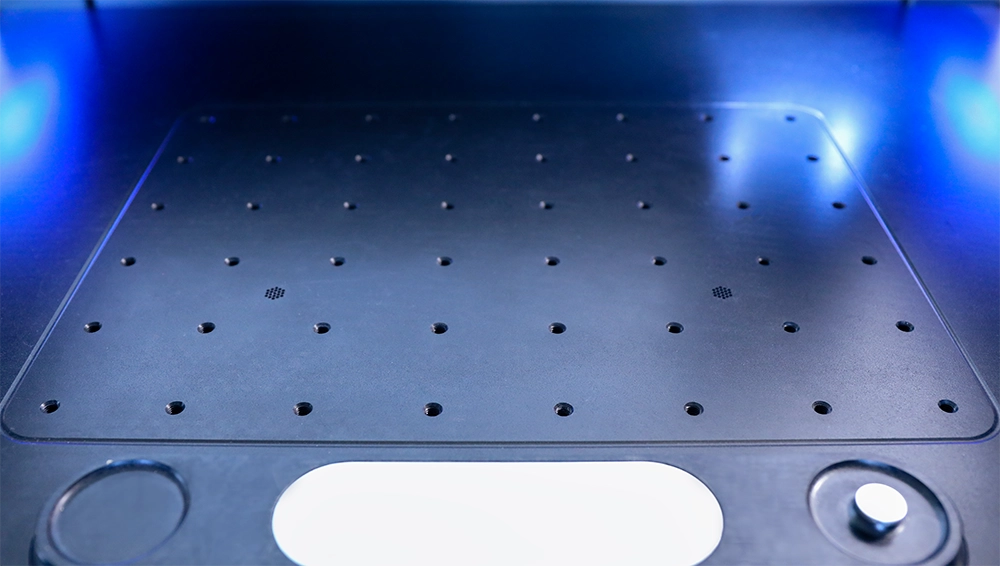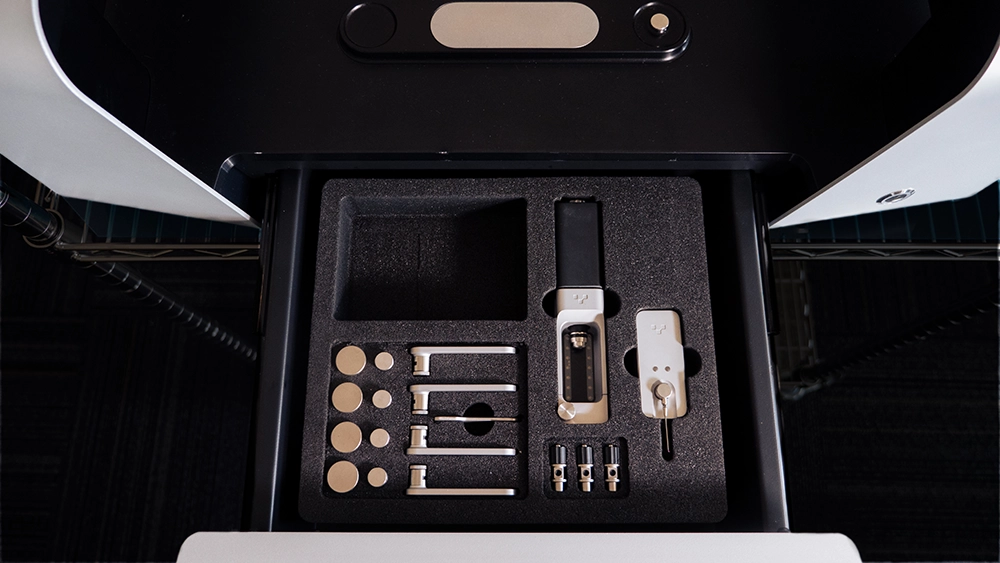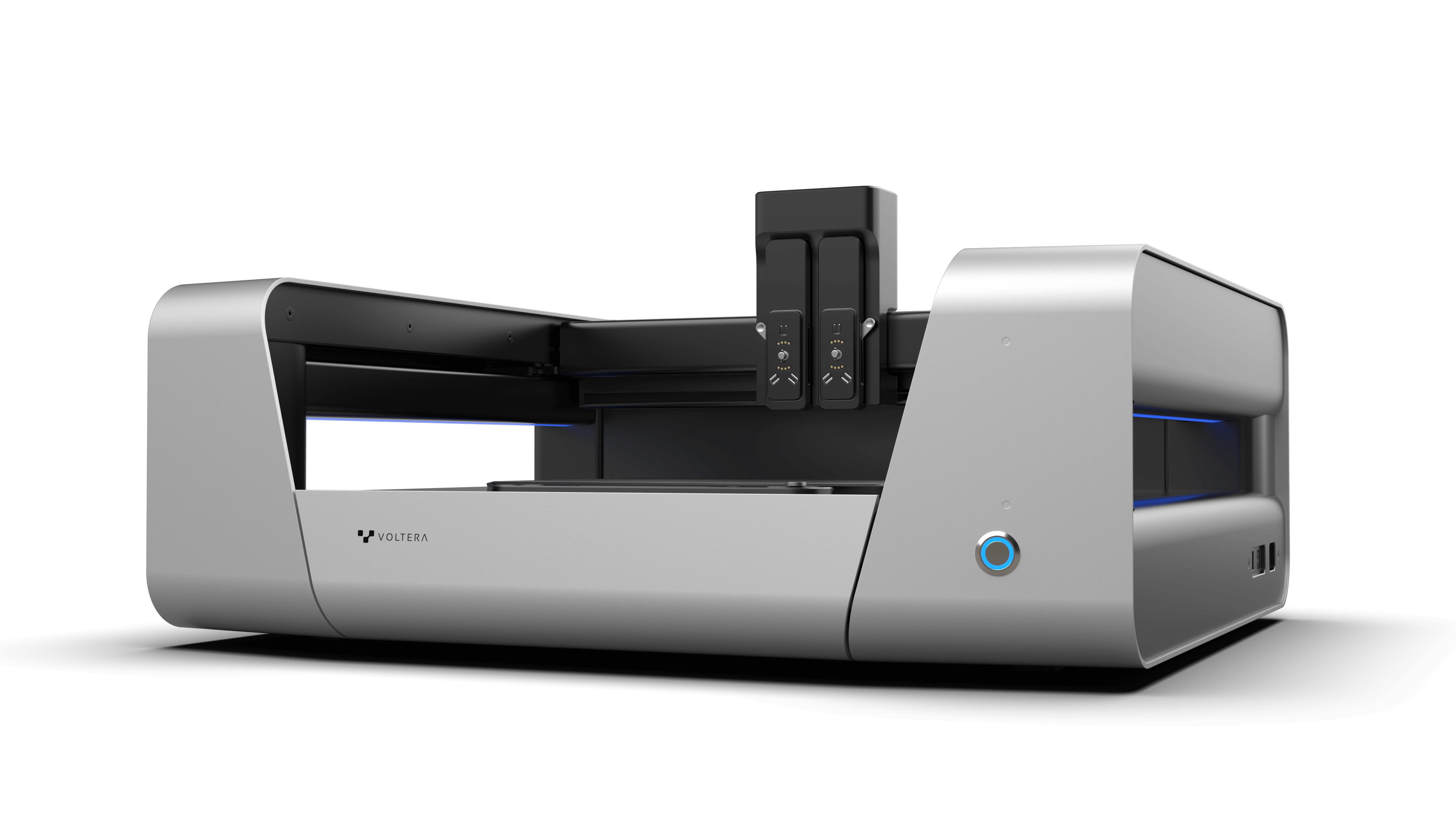
NOVA
The future of printed electronics
Unlock new opportunities and accelerate research and development with high-resolution printing using a range of functional materials and screen-printable inks.
Price: Contact sales to configure NOVA
U.S. customers: Most Voltera products are made in Canada and are exempt from U.S. tariffs under USMCA trade agreement. Learn more

Meet NOVA — a materials dispensing system
Unlock new opportunities
Be first to explore what’s possible with printed electronics and push the limits of functional materials research and development.
Streamline research and development
Change designs on the fly and get immediate feedback on new ideas, accelerating R&D timelines and reducing costs.
Total material freedom
Experiment with a wide range of substrates and screen-printable materials. Validate designs in the lab and seamlessly transition to production equipment.
No experience required
The intuitive user experience alleviates internal training challenges and allows anyone to achieve the results they are looking for.
What can NOVA do?
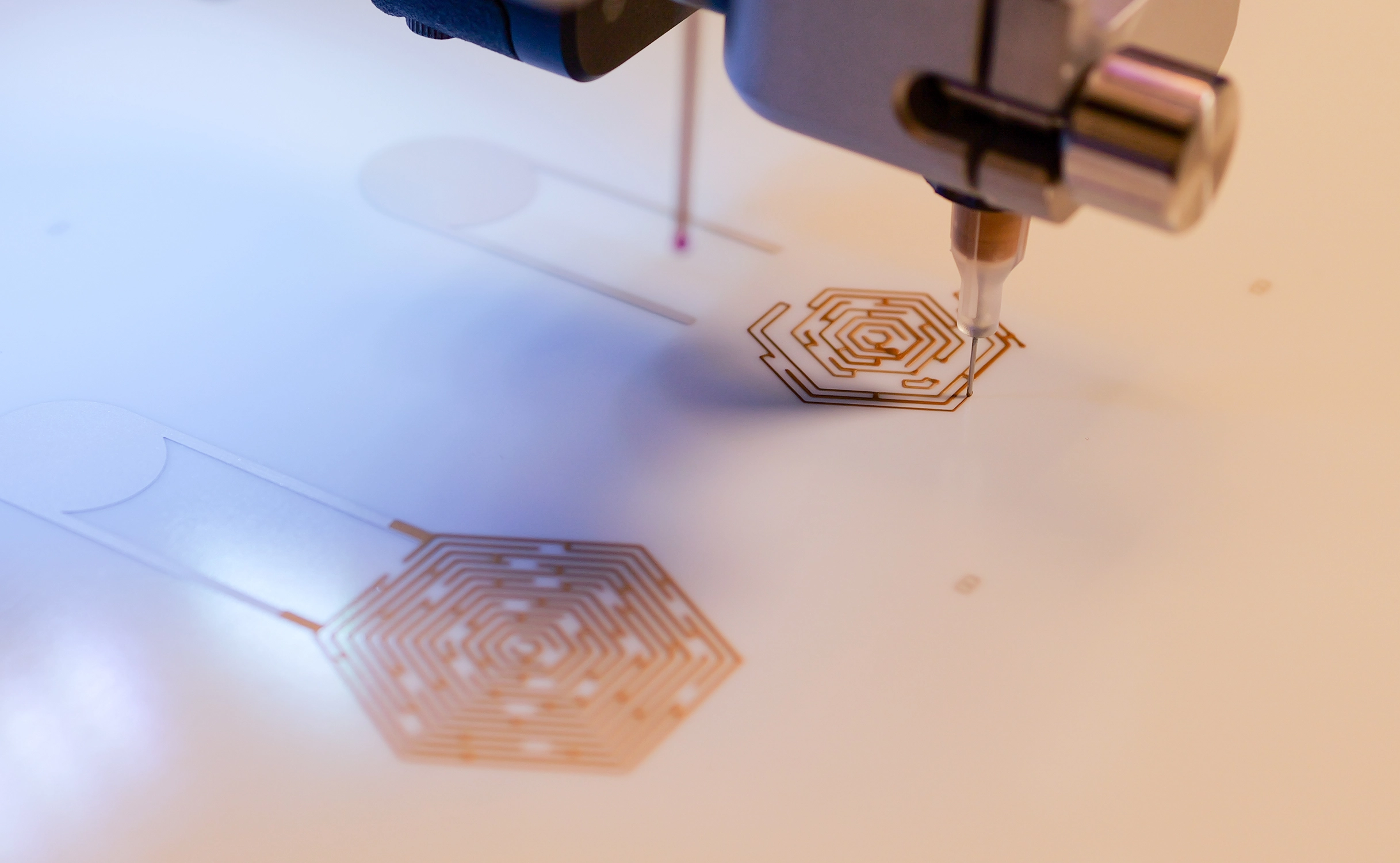
ECG electrodes
Materials and process:
Thermoplastic polyurethane (TPU)
Printed material
Creative materials EXP 2613-40 gold ink
Celanese Micromax™ Intexar™ PE874 stretchable silver paste
Nozzle size
Nordson EFD 7018395 200 µm dispensing tip
Nordson EFD 7018424 150 µm dispensing tip
Print time
23 minutes 57 seconds
ECG electrodes
Electroluminescent circuit
Magnesium zinc battery
Print on fabric
RFID tag
Flexible PCB
How many layers can NOVA print?
Meet Plan, NOVA’s newest feature*
Plan offers features such as multilayer printing and the ability to alter the sequence of trace printing.
With Plan, you can:
- Print up to 4 stack-up layers (multiple materials can be assigned to each layer)
- Print multi-material and multilayer designs
- Edit print jobs in a single workflow
- Minimize setup time for repeat print jobs
Meet Plan, NOVA’s newest feature*
Plan offers features such as multilayer printing and the ability to alter the sequence of trace printing.
With Plan, you can:
- Print up to 4 stack-up layers (multiple materials can be assigned to each layer)
- Print multi-material and multilayer designs
- Edit print jobs in a single workflow
- Minimize setup time for repeat print jobs
Printed sensors: University of Waterloo
“My research involves developing flexible and stretchable sensors for wearable electronics. With the Plan feature, I can separate different sensor elements, traces, or components to different layers and remove toolpaths that I don’t want. The ability to change the direction of tool paths has helped me the most — there’s no air pockets, and I have a very uniform trace width because I started printing in a designated safe region.”
Printed sensors: University of Waterloo
“My research involves developing flexible and stretchable sensors for wearable electronics. With the Plan feature, I can separate different sensor elements, traces, or components to different layers and remove toolpaths that I don’t want. The ability to change the direction of tool paths has helped me the most — there’s no air pockets, and I have a very uniform trace width because I started printing in a designated safe region.”
Need us to print your prototypes?
Submit your designs. We'll print them on NOVA and ship them to you.
NOVA benefits
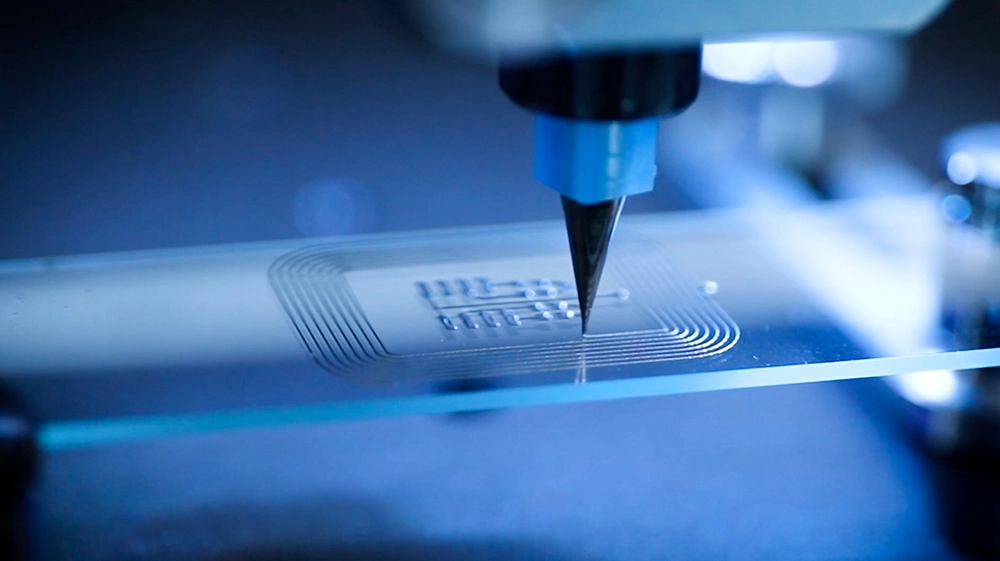
Streamline research and development with direct-ink-write dispensing
No tooling
Change designs on the fly and iterate without screens or stencils, eliminating delays and reducing costs.
No waste
Print only what’s needed, conserving valuable material.
No cleanup
Material is contained throughout the printing process, simplifying cleaning and handling procedures.
90% faster
iteration time
96% reduced
material costs
Streamline research and development with direct-ink-write dispensing
No tooling
Change designs on the fly and iterate without screens or stencils, eliminating delays and reducing costs.
No waste
Print only what’s needed, conserving valuable material.
No cleanup
Material is contained throughout the printing process, simplifying cleaning and handling procedures.
90% faster
iteration time
96% reduced
material costs

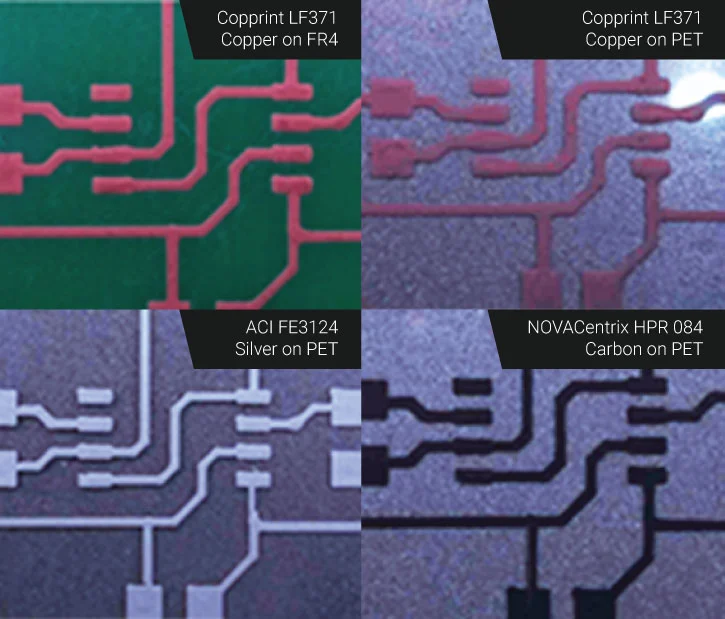
Explore new possibilities with high resolution, closed-loop dispensing
Increased material options
A wide range of compatible viscosities unlocks enhanced performance and material characteristics, from inks to gels and pastes.
Reduced risk
Validate designs and materials in the lab and seamlessly transition into production with scalable printing technologies.
Repeatable results
Achieve repeatable results with close-loop pressure feedback, temp-controlled dispensing, and an optimized algorithm for multilayer printing.
100 µm
Line width*
1,000 - 1,000,000 cps
Viscosity range
Up to 4
Stack-up layers**
* Dependent on material and nozzle.
**More stack-up layers are possible under certain conditions.
Explore new possibilities with high resolution, closed-loop dispensing
Increased material options
A wide range of compatible viscosities unlocks enhanced performance and material characteristics, from inks to gels and pastes.
Reduced risk
Validate designs and materials in the lab and seamlessly transition into production with scalable printing technologies.
Repeatable results
Achieve repeatable results with close-loop pressure feedback, temp-controlled dispensing, and an optimized algorithm for multilayer printing.
100 µm
Line width*
1,000 - 1,000,000 cps
Viscosity range
Up to 4
Stack-up layers**
* Dependent on material and nozzle.
**More stack-up layers are possible under certain conditions.

Adapt to any application with a large, configurable print area
Rigid substrates
Secure your rigid substrates of all shapes and sizes with provided threads onto the 40 mm x 40 mm mounting grid.
Compliant substrates
Secure your conformable substrates with NOVA’s porous titanium vacuum table which applies uniform suction.
Unconventional substrates
Develop application-specific fixturing for unconventional substrates using the mounting grid features.
220 mm x 300 mm
Print area
40 mm x 40 mm, M5
Mounting grid
Adapt to any application with a large, configurable print area
Rigid substrates
Secure your rigid substrates of all shapes and sizes with provided threads onto the 40 mm x 40 mm mounting grid.
Compliant substrates
Secure your conformable substrates with NOVA’s porous titanium vacuum table which applies uniform suction.
Unconventional substrates
Develop application-specific fixturing for unconventional substrates using the mounting grid features.
220 mm x 300 mm
Print area
40 mm x 40 mm, M5
Mounting grid

Ensure print accuracy with integrated computer vision
Eliminate registration errors
Accurately position and align patterns with augmented reality overlay.
Optimize print quality
Find the ideal height, pressure, and print settings with a dedicated material calibration workflow.
Simplify reporting
Capture images for analysis, measurements, and documentation.
17 µm/pixel
Resolution*
1920 x 1080
Image size
* Dependent on substrate height
Ensure print accuracy with integrated computer vision
Eliminate registration errors
Accurately position and align patterns with augmented reality overlay.
Optimize print quality
Find the ideal height, pressure, and print settings with a dedicated material calibration workflow.
Simplify reporting
Capture images for analysis, measurements, and documentation.
17 µm/pixel
Resolution*
1920 x 1080
Image size
* Dependent on substrate height

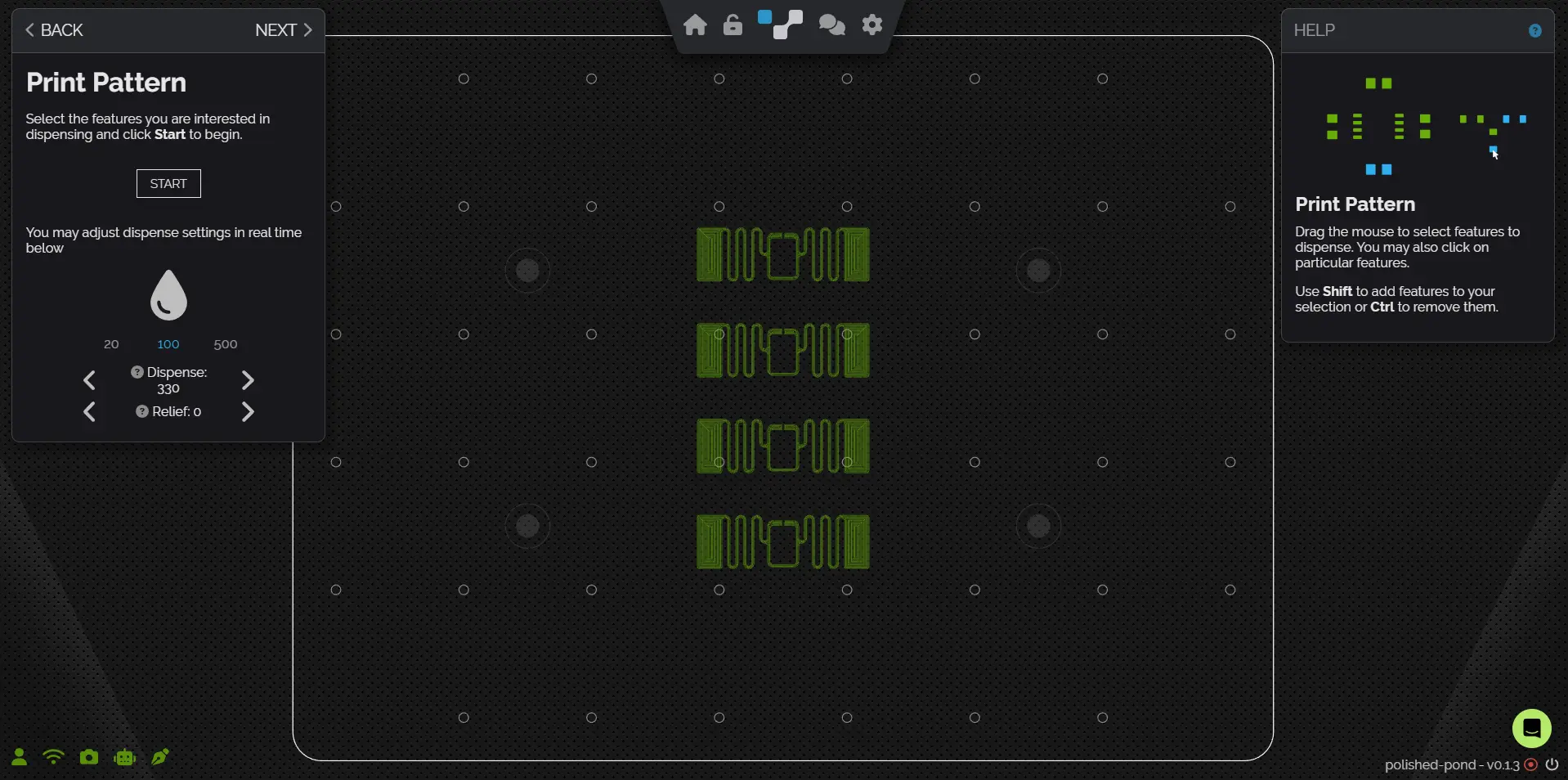
Easy-to-use software
Smooth onboarding
Guided workflows, walk-through videos, and user profiles in the browser-based app set you up for success.
Seamless cooperation and independent research
Browse, create, and modify saved profiles for materials and substrates with the central materials library.
In-app access to support
Connect directly with Voltera support via live, in-app chat.
No downloads required
Gerber file compatible
Easy-to-use software
Smooth onboarding
Guided workflows, walk-through videos, and user profiles in the browser-based app set you up for success.
Seamless cooperation and independent research
Browse, create, and modify saved profiles for materials and substrates with the central materials library.
In-app access to support
Connect directly with Voltera support via live, in-app chat.
No downloads required
Gerber file compatible

NOVA anatomy
Who's using NOVA

Want to see NOVA in action?
NOVA will help bridge the gap between what you can do and what you wish you could do with electronics. Take a look at how people are using NOVA for rapid prototyping of additive electronic devices and to print electronics on everything.
